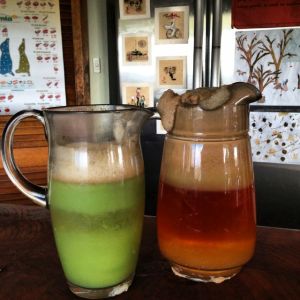My first meeting with The Inspector back in early 2013 was inauspicious to say the least.
It was my first visit to PrimeSafe, but we had a month or two prior been granted a Class 3 Food Premises registration under the Food Act 1984 by our local Environmental Health Officer, which allowed us to refrigerate and sell our pre-packaged meat from the farm. We raised our pigs out on the paddocks and transported them to the abattoir an hour away. Then the carcasses were delivered to our PrimeSafe-licensed butcher, and when everything was cut and packed, we understood from our Council and our reading of the legislation that we could store and sell our meat directly from a registered premises here on the farm.
It was all going swimmingly, so it was time to get our Meat Transport Vehicle (MTV) licence from PrimeSafe in order to commence deliveries to customers in the city. I was skeptical when a pig-farming mate told me my 12-volt esky would pass muster for an MTV (so long as it’s under cover and strapped to the vehicle), but upon ringing PrimeSafe they confirmed this to be the case. And so with some confidence I strode into their offices in South Melbourne to obtain my MTV licence.
A rather blank young man starts to process my paperwork, and it’s all going quite well. Then I, trying to reassure him, say, ‘and don’t worry, I understand about the temperature monitoring requirements because I’ve been doing that under my Class 3 for a little while now at the farm.’ I smile reassuringly and nod.
Blank young man: ‘you’ve been selling meat from your farm?’
Me: ‘sure, under a Class 3 Premises registration from our council.’
Blank young man: ‘please just wait here,’ and uses a security card to disappear behind the glass door. Uh oh.
Out comes The Inspector.
‘You can’t sell meat from your farm without a licence from PrimeSafe.’
I what?!
The Inspector directs me into a meeting room behind the glass door I subsequently describe as the ‘swinging lightbulb’ room, because the interrogation that ensues is aggressive and punitive. I am cited sections of the Meat Industry Act 1993, told I have breached the Act, and that it is a ‘very serious offence’ and that we ‘could be prosecuted.’
I explain that my council was very happy to give us a registration, and that they had inspected the premises and found them to meet their standards for the storage and sale of pre-packaged meat. That we have paid some $250 for this registration.
The Inspector sighs dramatically at what she infers is the incompetence of councils, and wants to know ‘which council’ so she can set them straight. I ask her not to make things difficult between us and our council as we’re pioneering some new ground and they’ve been remarkably supportive.
‘I’m going to need you to write out an undertaking that you will not store or sell meat from your property without a licence,’ commands The Inspector.
I’m pretty sure this is a terrible idea and I say so. I invoke my father-in-law who is a retired solicitor and say I’m pretty sure he would advise me not to do this, but that I don’t wish to seem non-compliant. So I write out the damned undertaking and sign it, still quite convinced this is a terrible idea.
At one point in the interaction I gain control of my trembling voice (I have been so blindsided by this interaction I am penduluming wildly between confusion, anger and fear) to say to The Inspector, ‘wait. Can we stop for a moment and remember that I am here because I came here to comply?! I am not and was not trying to get away with anything wrong. We want to comply, and we just need you to help us understand how best to do that, and I don’t need to be treated like I’m trying to get away with doing the wrong thing.’
The Inspector takes her own deep breath and assumes a slightly less aggressive tone, makes a bit of small talk even (at which I bridle). She gathers up my undertaking and we go outside for the vehicle inspection that was the reason for my visit. Inspects the vehicle. Approves it. Shakes my hand and wishes me a good day.
So now I have a licensed MTV but can no longer sell meat from my farm.
Thank goodness we’d already commenced plans to build the butcher’s shop so that we could be PrimeSafe licensees, right?
Right?!
NB: I am currently personally aware of at least three cases of other farms who would like to sell their meat pre-packaged from a farm gate shop, but who have been told they cannot by PrimeSafe. I know of another three who are selling from farm gate shops under Class 3 Premises registrations.
Importantly, we all know of hundreds of supermarkets, delis and corner shops that are selling pre-packaged meat without the requirement for a meat processing licence (even in the cases where they process meat, such as supermarkets).
Explain how this is about food safety?
(PS I’ll talk further of this in later entries, but you should always get the regulator to give you any orders, instructions or demands in writing.)
Read Part 1 of The Regulations Diaries: PrimeSafe’s War on Salami Days



















